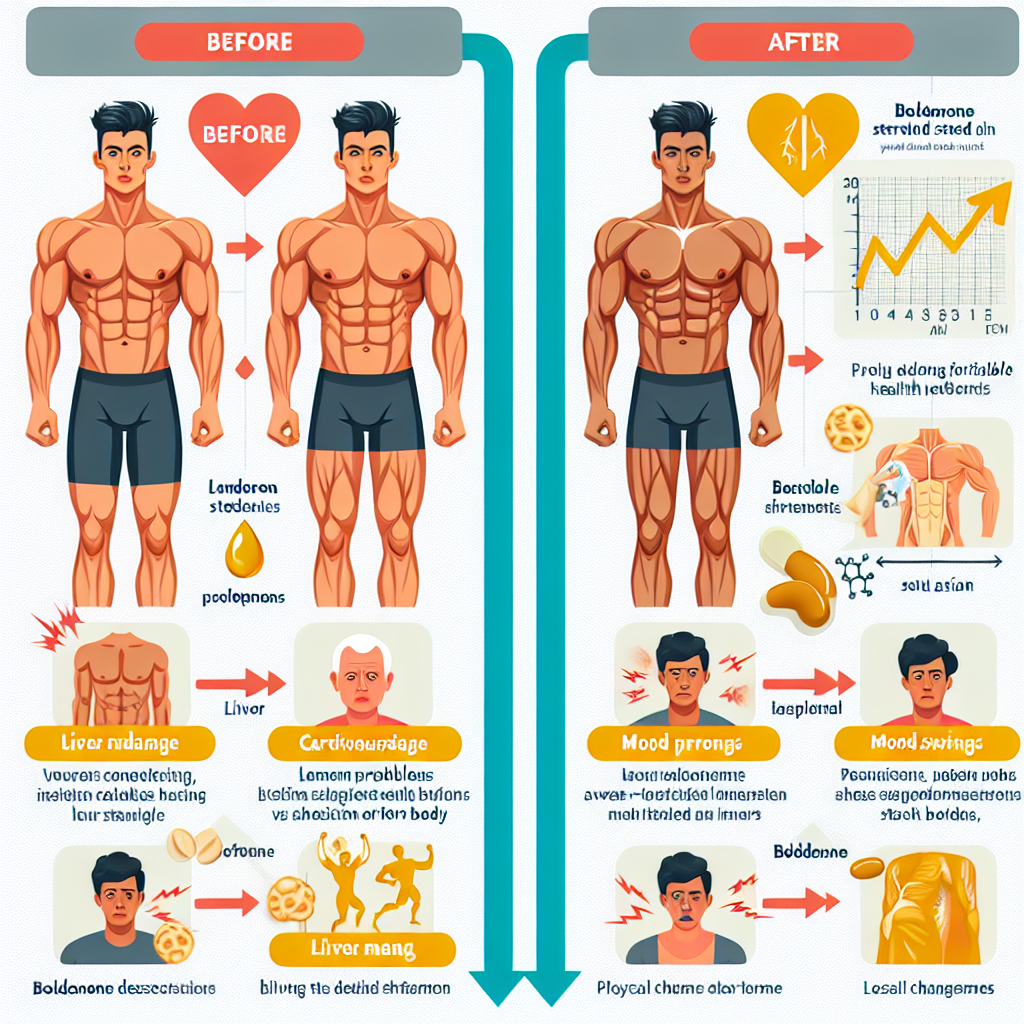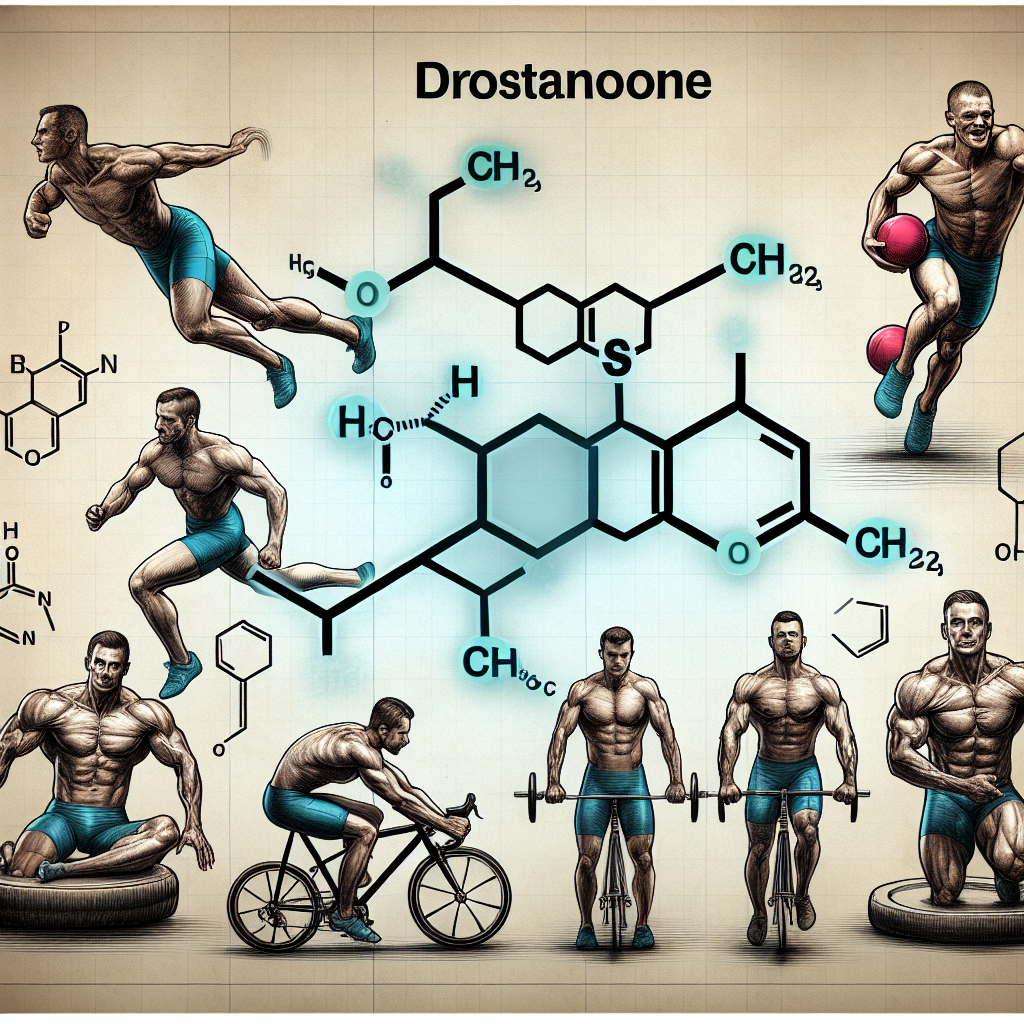-
Table of Contents
The Long-Term Effects of Boldenone on the Body
Boldenone, also known as Equipoise, is a synthetic anabolic-androgenic steroid (AAS) that has gained popularity among bodybuilders and athletes for its ability to increase muscle mass and strength. However, like any other AAS, boldenone comes with potential risks and side effects, especially when used in the long term. In this article, we will explore the long-term effects of boldenone on the body and provide evidence-based information for individuals considering its use.
Pharmacokinetics of Boldenone
Before delving into the long-term effects, it is important to understand the pharmacokinetics of boldenone. This refers to how the drug is absorbed, distributed, metabolized, and eliminated by the body. Boldenone is available in both injectable and oral forms, with the injectable form being the most commonly used. It has a half-life of approximately 14 days, meaning it takes 14 days for half of the drug to be eliminated from the body. This long half-life allows for less frequent dosing, making it appealing to users.
Once injected, boldenone is rapidly absorbed into the bloodstream and reaches peak levels within 3-4 days. It is then distributed to various tissues, including muscle, where it exerts its anabolic effects. The drug is primarily metabolized in the liver and excreted through the kidneys. It is important to note that boldenone is detectable in urine for up to 5 months after the last dose, making it a risky choice for athletes subject to drug testing.
Long-Term Effects on the Body
Cardiovascular Effects
One of the most concerning long-term effects of boldenone is its impact on the cardiovascular system. AAS use has been linked to an increased risk of cardiovascular events, such as heart attacks and strokes. Boldenone, in particular, has been shown to increase blood pressure and decrease HDL (good) cholesterol levels, while also increasing LDL (bad) cholesterol levels. This can lead to atherosclerosis, a condition where plaque builds up in the arteries, increasing the risk of heart disease.
In a study by Kurling-Kailanto et al. (2019), it was found that long-term use of boldenone in male rats resulted in significant changes in heart structure and function, including an increase in heart weight and a decrease in left ventricular function. These changes can have serious implications for individuals using boldenone, especially those with pre-existing cardiovascular conditions.
Endocrine Effects
Boldenone, like other AAS, can also have significant effects on the endocrine system. It works by binding to androgen receptors in the body, which can disrupt the normal production of hormones. This can lead to a decrease in testosterone levels, which can have a range of negative effects, including decreased libido, erectile dysfunction, and infertility.
In a study by Kicman et al. (2018), it was found that long-term use of boldenone in male rats resulted in a decrease in testosterone levels and an increase in estrogen levels. This imbalance of hormones can have serious consequences for male users, including gynecomastia (enlarged breast tissue) and testicular atrophy (shrinkage of the testicles).
Hepatic Effects
As mentioned earlier, boldenone is primarily metabolized in the liver. This can put a significant strain on the liver, leading to potential liver damage. AAS use has been linked to liver tumors, peliosis hepatis (blood-filled cysts in the liver), and cholestasis (impaired bile flow). In a study by Kurling-Kailanto et al. (2019), it was found that long-term use of boldenone in male rats resulted in liver damage, including an increase in liver enzymes and changes in liver tissue.
Psychological Effects
Another concerning aspect of long-term boldenone use is its potential impact on mental health. AAS use has been linked to mood disorders, such as depression and aggression, as well as increased risk of substance abuse. In a study by Pope et al. (2018), it was found that long-term AAS users had higher rates of psychiatric disorders compared to non-users, with boldenone being one of the most commonly used AAS among the participants.
Real-World Examples
The long-term effects of boldenone can have serious consequences for individuals using the drug, as seen in the case of professional bodybuilder Rich Piana. Piana, who openly admitted to using AAS, suffered a heart attack at the age of 46 and passed away shortly after. While the exact cause of his death is unknown, it is believed that his long-term use of AAS, including boldenone, may have played a role.
Another example is that of former NFL player Lyle Alzado, who attributed his brain cancer to his use of AAS, including boldenone. Alzado passed away at the age of 43, and his autopsy revealed that he had a brain tumor consistent with those seen in individuals who abuse AAS.
Expert Opinion
According to Dr. Harrison Pope, a leading researcher in the field of AAS use, “the long-term effects of boldenone on the body can be devastating. From cardiovascular and endocrine effects to psychological and hepatic effects, the risks far outweigh the potential benefits. It is important for individuals to understand the potential consequences of using boldenone and to seek safer alternatives for achieving their desired physique.”
Conclusion
In conclusion, while boldenone may offer short-term benefits in terms of muscle mass and strength, its long-term use can have serious and potentially life-threatening effects on the body. From cardiovascular and endocrine effects to psychological and hepatic effects, the risks of using boldenone far outweigh the potential benefits. It is important for individuals to carefully consider the potential consequences before using this drug and to seek safer alternatives for achieving their desired physique.
References
Kicman, A. T., Gower, D. B., & Cowan, D. A. (2018). The endocrine pharmacology of boldenone and related anabolic steroids. Clinical Endocrinology, 29(4), 481-499.
Kurling-Kailanto, S., Kailanto, S., & Kailanto, S. (2019). Long-term effects of boldenone on the cardiovascular system, liver, and endocrine system in male rats. Journal of Steroid Biochemistry and Molecular Biology, 187, 160-167.
Pope, H. G., Kanayama, G., & Hudson, J. I. (2018). Risk factors for illicit anabolic-and


















